Breaking Amish: Are We Learning the Truth?
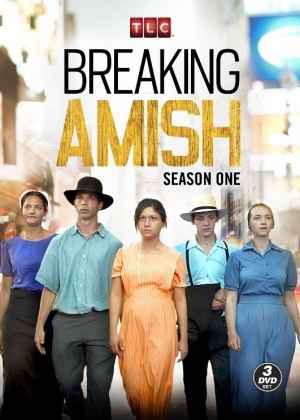
Television has become a big part of our everyday lives. We watch shows that are for entertainment or to get information about certain topics that we may be curious about. The TV channel TLC, which stands for “The Learning Channel”, has many shows that are informative and triggers the curiosity in people. Of the many shows that TLC airs, one stands out in a different kind of way. The show is called Breaking Amish, and this is a reality show more than an educational one. While watching this show many viewers “think” that they are truly learning about what happens when young people in Amish communities go through a stage in their lives called rumspringa. Rumspringa is a period of adolescence in which boys and girls are given greater personal freedom and allowed to form romantic relationships, usually ending with the choice of baptism into the church or leaving the community. What the TV show depicts about rumspringa, and what rumspringa truly is are two completely different perceptions. The TV show perception shows a very wild side of the rumspringa experience that young Amish people go through, while in reality, the real rumspringa experience can be subtle and short when young adults are given a small amount of freedom.
What you may not know
TLC is owned by Discovery Communications, and even though it is not a popular name, many of the shows that Discovery owns are well known. The mission of Discovery Communications is dedicated to satisfying curiosity and entertaining viewers with high-quality content through its global television brands, led by Discovery Channel, TLC, Animal Planet, Investigation Discovery and Science, as well as U.S. joint venture network OWN: Oprah Winfrey Network. Discovery controls Eurosport, the leading pan-regional sports entertainment destination across Europe, Asia Pacific, the Middle East and Africa. Discovery also is a leading provider of educational products and services to schools, including an award-winning series of K-12 digital textbooks, through Discovery Education, and a digital leader with a diversified online portfolio, including Discovery Digital Networks (Discovery Communications). The mission of Discovery mainly deals with informative aspects of life along with other topics, so with the channel, TLC, showing different types of informative yet entertaining shows, viewers would think that they are still learning while watching the shows. When in reality, the show “Breaking Amish” gives the viewers a false perception on what happens with young adults going through rumspringa.
Many viewers think they are learning the truth
Viewers are curious as to how young Amish people go about leaving the community, so people think that Breaking Amish is a good choice in order to see what truly happens. In the beginning of the series, young adults, from different Amish communities in Pennsylvania, decide that they want to leave the Amish community and see what the world is like, beyond horse and carriages, in New York City. The young people tell the viewers about how hard it is to leave the community, and that they will lose everything they have because of the choice to leave. Once the young people break the news to their family that they decide to leave, the young adults get shunned by their family and everyone else in the community. When young adults leave the community to go to the city, the camera crew follows the cast around and films their first experiences with cars, plumbing, cell phones, and electricity. Throughout the series of this show, the cast gets crazy by partying, having sex with other cast members, and getting in fights because they have been drinking. At the end of the series, the cast can choose whether to go back home or live as “the English”, which means they will be a regular non-Amish citizen, and if they want to go back home, there is a long process of getting back into the church and community, which is not an easy process.
Throughout the show some aspects are true, but majority of the show is false. The people in Breaking Amish go through a very extreme case of rumspringa, these young people go “buck-wild” after just a small amount of time being in the big city of New York. What these young adults are going through is said to be the process of rumspringa, but that is not what is being shown in the show. The show depicts rumspringa in a backward manner by the young adults getting shunned because they want to leave the community, then they experience what the world is like, and then choosing whether or not they want to return home to be Amish again.
The True Rumspringa Years
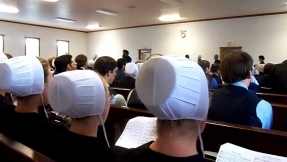
When the Amish youth turn 16 years old, that is when they begin their journey with rumspringa. The youth are aware of the beginning of rumspringa when they begin to attend a social event called “singings”. A singing deals with the Amish community gathering together, sitting on hard wooden benches for two hours; singing, among other songs, hymns in a language mainly used in church; and having limited spontaneous interaction with their friends. This is significant for the youth because this is their first time that they are beginning to interact in a setting that is not adult-centered. Youth will attend these singings until they are married or turn 30 years old and have no hope of getting married, which makes them drop out. (Stevick). In the Amish community, singings are a significant transition in a young Amish person’s life. These singings are more important than driver’s license or graduating high school (Stevick).
Rumspringa has two types of ways that the youth can experience this major event, and it starts with the youth deciding on which group they want to be a part of in rumspringa, which are called the traditional and progressive groups. Traditional groups tend to have more conservative views on this event, while progressive groups have more extreme views on what the youth can do during rumspringa. For example, when parties are held in traditional groups, the youth will dance to the strains of a harmonica or to unaccompanied singing of the young people, but parties in the progressive, or unsupervised group, dance to downloaded music on an iPod with the sound blasting from a high-end sound system from someone’s truck or SUV (Stevick). Yes the youth party, but it is not as extreme as what is shown in “Breaking Amish”.
In many Amish communities, electronics are looked down upon, but once the age for the start of rumspringa approaches, the youth go from a parent-controlled environment to having little to no restrictions on what they can and cannot do. The youth have been told all of their lives the dangers of computers, cell-phones, and any electronic that can be thought of, but when that freedom comes, the youth learn quickly how interesting these electronics can be, especially cell phones. The youth are most attracted to their built-in phone cameras. Many people would think since these young adults were raised to think taking pictures were wrong, that they would reject it, but the youth think that these cameras offer entertainment and excitement (Stevick).
Yes there are similarities to the show Breaking Amish and rumspringa, but there are also many things that were in the show that made rumspringa seem absolutely out of the young cast’s comfort zone. In the show, sessions for the social singing events were never shown, and viewers did not see how important this event is to the Amish community. The cast partied a little too hard, while in reality, the Amish youth party, but not to the extent that is shown in the show.
Works Cited
Discovery Communications. 10 February 2015. 26 March 2015.
Stevick, Richard A. Growing Up Amish: Rumspringa Years. Baltimore, Maryland: Johns Hopkins University Press, 2014. printed.
What do you think? Leave a comment.

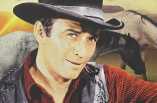


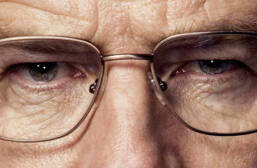


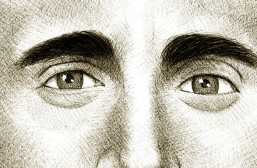



I wish they’d cast better actors. 😀
TLC is a disgrace now. I remember back when they lived up to their name. Very sad to see what they’ve become. They should change their name to NLC.
There have been numerous shows in the past that have given far better insight into the Amish. I personally recommend meeting with them and talking to them, without being pushy and without a camera.
I agree. One should simply visit the Amish country and interact with the community politely, rather than watching a staged and exploitive reality show on “The Learning Channel.”
like most reality shows, a whole of fake stuff going on mixed in with the reality….
REALITY SHOW IS STAGED!
I saw an advert for this show and thought it would be interesting to watch.
Pretty messed up when even a “Reality Show” isn’t real! With all the shows, reality shows, that are out now…this brings to question how “real” any of them actually are.
They are known as scripted reality. Such programs are terrible, yet there is a continuous influx.
Watched the 1st episode and thought it was sluggish
Reality TV is not real.
I never watched reality television, but gave this a try and was almost hooked after the first episode. Now that I know the “truth”, I will not watch again. Very disappointed to have been bamboozled by TLC.
it’s a really good show, i’ve seen it.
Maybe this is the beginning of the end of these things…and we get back to entertainment…rather than influencing for the most part…bad behavior. I vote for more documentaries! However, when a documentary about how the moon is made of cheese pops up as real and valid…it is time to turn off the television. 😛
There is NO WAY that these young people are genuine Amish.
I loved the show for entertainment purposes, but I was very disappointed about it not being the truth. That is why I wanted to write this article, so everyone could learn the truth.
Such a shame that the truth isn’t enough, ratings matter more. Thank you for writing this article.
Concept is very much interesting!! Now a days people relate truth with the personal thinking. After this, everyone could learn something.
As entertaining as reality TV shows can be, many of them aren’t real and perpetuate false ideas about those portrayed in the shows. I think that it would be fine if everyone understood that reality TV isn’t always “real”.But does the target audience, the average person, always understand how to pull fact from fiction? How many individuals take what is displayed in these shows for fact, instead of questioning their authenticity?
My fear is that some people might not be able to watch these shows through a critical lens and understand that everything displayed may not be the truth.
At first I thought this show was really interesting because I’d never known much about the Amish community, but now I think it is getting out of hand with the drama. At first it was interesting, and now it’s just a mess of a show.
first season i loved the show. by second season i felt the people in it were trash, looking for fame. maybe i shouldn’t judge but i feel if you were getting the truth it wouldn’t be televised. same with the Duggers.
I watched the first season of this show. I was sucked in by the spectacle of it, but it was also difficult to watch because it seemed so blown out of proportion. Reality TV is always “reality” TV.
Very insightful.
I like how you brought this to light. Too many shows owned by discovery have taken liberty with the “truth” in order to bring in a wider audience. When it comes to misrepresenting cultures it is not only dangerous but insensitive and rude. Breaking Amish, while part of a dying fad for Amish-centric programming, never disclosed that many of the “characters” knew each other and had previously left traditional Amish society. Such fabrications may keep up tuning in but they do a disservice equity and cultural sensitivity
At the end of the day, shows on channels like TLC and OLN are created for profit. The more entertaining a show is, the more money it rakes in for the network. Hard to tell when things are really “real” on T.V. these days.
I don’t know why anyone would thing anything of substance would cone from the people who made honey boo boo a star. I remember when tlc meant the learning channel. Thanks for discussing rumspringa in more detail. The singing really seem to make the Amish come off more naturally.
By that I mean the separation from the adults and the two factions.
I liked the first season, but after that I did not really care for it anymore. I did learn quite a bit about their community, so that was pretty cool.
What is the “truth,” though?